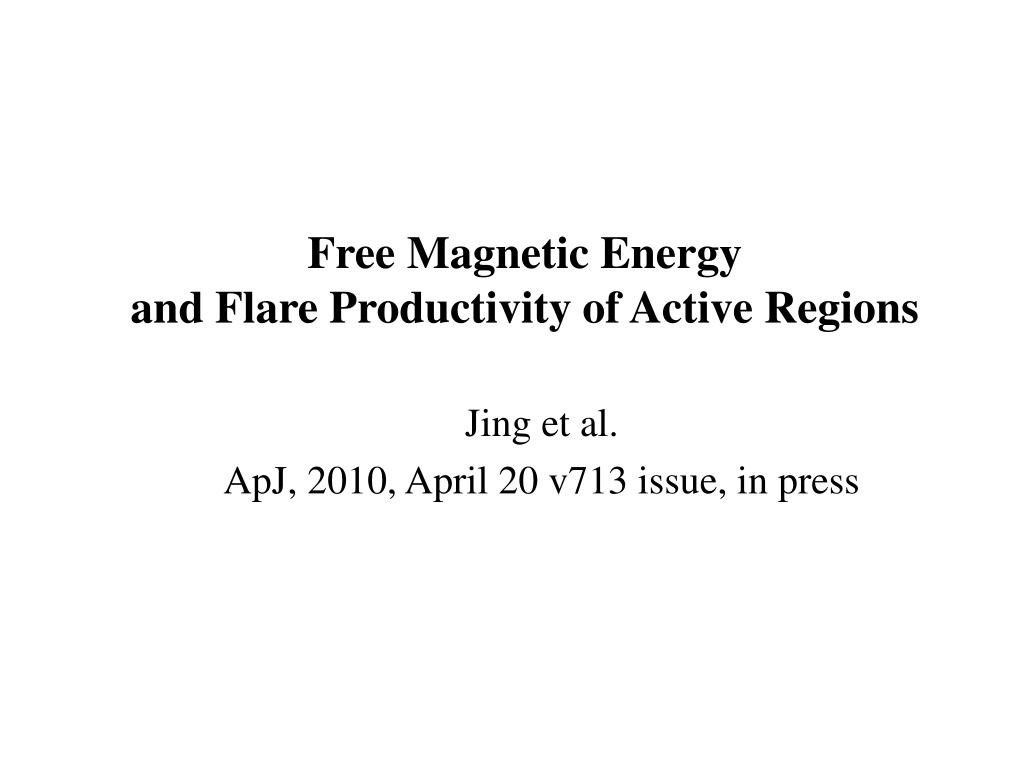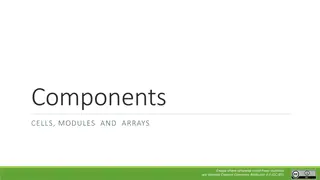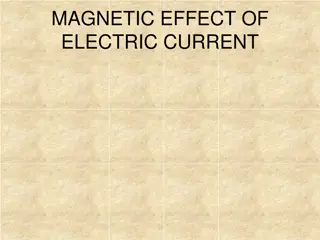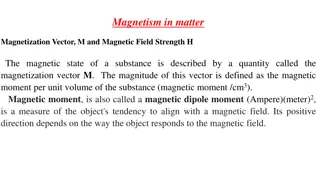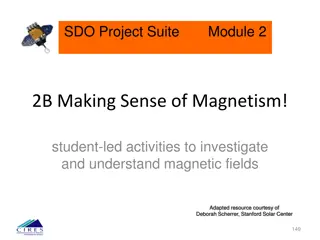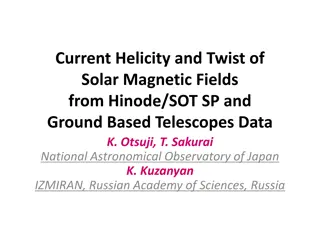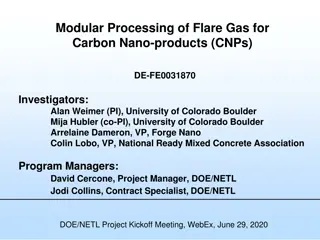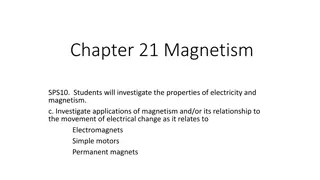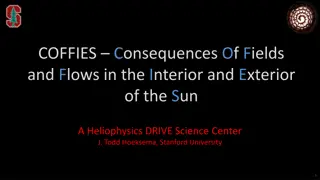Understanding the Relationship Between Free Magnetic Energy and Solar Flare Productivity
This study examines the correlation between free magnetic energy and flare productivity in active regions on the Sun. By analyzing data from solar events and magnetic field observations, researchers investigate the temporal variation of free magnetic energy and its impact on flare occurrence. Various data processing techniques are employed to extrapolate magnetic fields and study the statistical relationship between free magnetic energy and flare index over different time windows.
Download Presentation

Please find below an Image/Link to download the presentation.
The content on the website is provided AS IS for your information and personal use only. It may not be sold, licensed, or shared on other websites without obtaining consent from the author. Download presentation by click this link. If you encounter any issues during the download, it is possible that the publisher has removed the file from their server.
E N D
Presentation Transcript
Free Magnetic Energy and Flare Productivity of Active Regions Jing et al. ApJ, 2010, April 20 v713 issue, in press
Motivations #1 Free Magnetic Energy Efree 2 B 2 B potential 8 = = Eq. (1) NLFF 8 E E E dV dV free NLFF potential V V where V is the volume of computational domain. Soft X-ray Flare Index FI = FI Eq. (2) + + 1 . 0 + 100 ( 10 1 / ) B I I I I X M C where is the length of time window (measured in days), and IX IM IC and IB are GOES peak intensities (in units of 10-6 W m-2) of X-, M-, C- and B-class flares produced by the active region for the duration . In this study, we use three different time windows ranging from the time of the analyzed magnetogram to the subsequent 1, 2 and 3 days after that time, i.e., FI n-day , where n=1,2,3
Motivations #2 Examine the statistical correlation between free magnetic energy Efree and flare index FIn-day measured within the 1-, 2-, and 3-day time window. Study the temporal variation of Efree for both flare-active and flare- quiet regions over a period of days.
Data Processing Eq. (2) Hinode/SP data spectra NOAA Solar Event Reports FIn-day Stokes Inversion using an Unno-Rachkovsky inversion based on the assumption of the Milne-Eddington atmosphere Efree Eq. (1) Extrapolate the NLFFF with the weighted optimization method (Wiegelmann 2004) Extrapolate the potential field with a Green function method (Aly 1989) Remove the 180 ambiguity with the minimum energy method (Metcalf 1994) Preprocess the non-force-free photospheric vector magnetograms to remove forces and torques from the boundary (Wiegelmann et al 2006) Correct the projection effect for off-disk-center data
Top panels: Scatter Plots of FI n-day vs. Efree . FI n-days which equal 0 are set to 0.01 to avoid arithmetic error and shown as grey points. Bottom panels: Scatter plots of FIn-day vs. Epe ; Result #1 2 B 8 2 B 8 p = o E dA dA pe
Top panels: Scatter Plots of FI n-day vs. Efree . FI n-days which equal 0 are set to 0.01 to avoid arithmetic error and shown as grey points. Bottom panels: Scatter plots of FIn-day vs. Epe ; Result #1 2 B 8 2 B 8 p = o E dA dA 1 3 4 2 pe
Result #2 Left panels: Snapshots of SOT-SP vector magnetograms of NOAA 10930,10960 and 10963. Right panels: Extrapolated NLFF fields of NOAA 10930, 10960 and 10963. Temporal variation of Efree, Epe, and the GOES light curves of NOAA 10930, 10960 and 10963.
Quality Control #1 Left: SOLIS chromospheric magnetic field Bz vs. unpreprocessed Hinode/SP photospheric Bz; Right: SOLIS chromospheric Bz vs. preprocessed Hinode/SP photospheric Bz. The SOLIS chromospheric magnetogram was taken on 2006 Dec.11 at 18:15 UT in AR 10930, and the Hinode/SP photospheric magnetogram was taken at 17:00 UT on the same day and in the same active region.
Quality Control #2 Left: TRACE 171 image of NOAA 10960, with over-plotted NLFF field lines. Right: Hinode/XRT image of NOAA 10960, with over-plotted NLFF field lines. TRACE image: 2007 June 7, 03:10 UT Hinode/XRT image: 2007 June 7, 03:16 UT Hinode/SP magnetogram: 2007 June 7, 03:16 UT
Quality Control #3 where is the grid spacing x where The histograms of CWsin (left) and <fi>metrics (right) for the 75 samples.
Summary: 1. Efree is moderately to strongly correlated with FIn-day. However, compared with photospheric magnetic parameter Epe , Efree shows little improvement on the flare predictability. 2. Based on three cases, although the magnitude of Efree differentiates between the flare-active and flare-quiet regions, the temporal variation of Efreedoes not exhibit a clear and consistent pre-flare pattern.
Discussion: 1. Problems in NLFF field modeling from the photospheric boundary uncertainties in the transverse field measurements 180 ambiguity in the transverse field the non-force-free nature of the photospheric boundary difficulties of guaranteeing the existence and uniqueness of the NLFF field solution 2. Flare triggering and release mechanisms Triggering mechanism? Thermal emission, as quantified by FI Released energy Non-thermal emission CME dynamics
